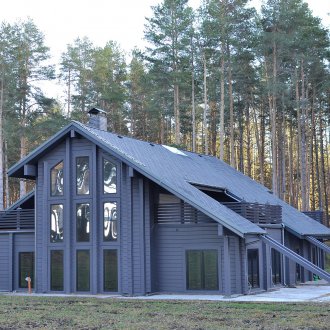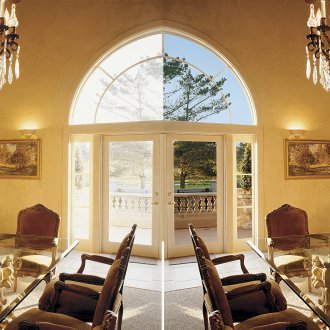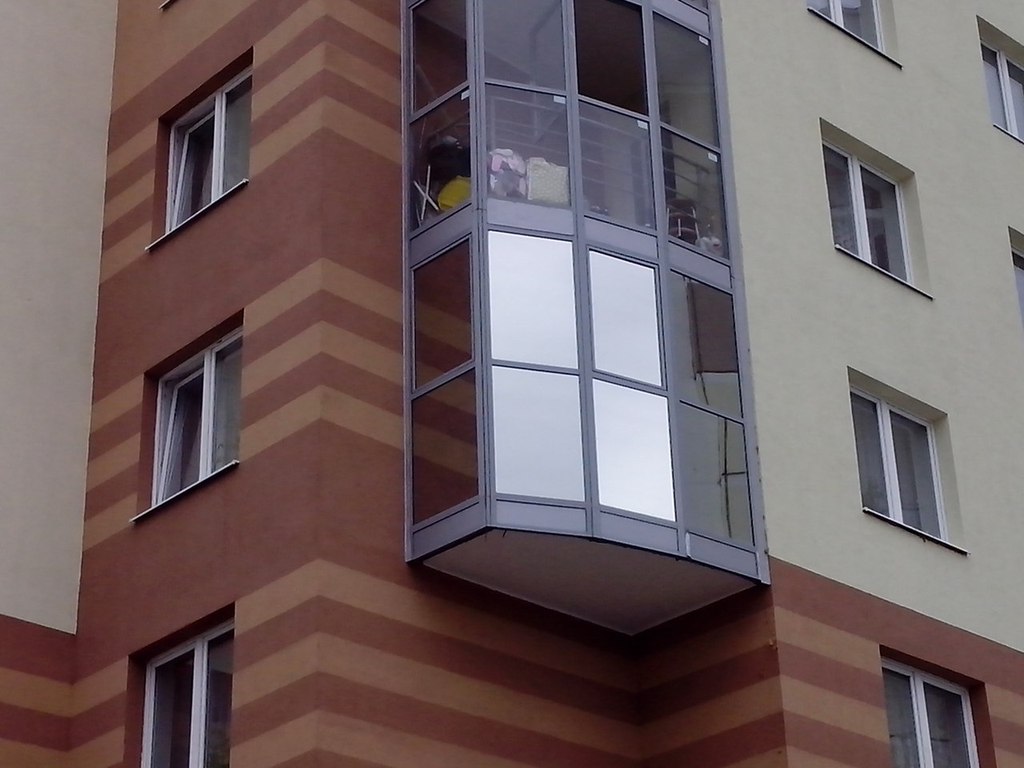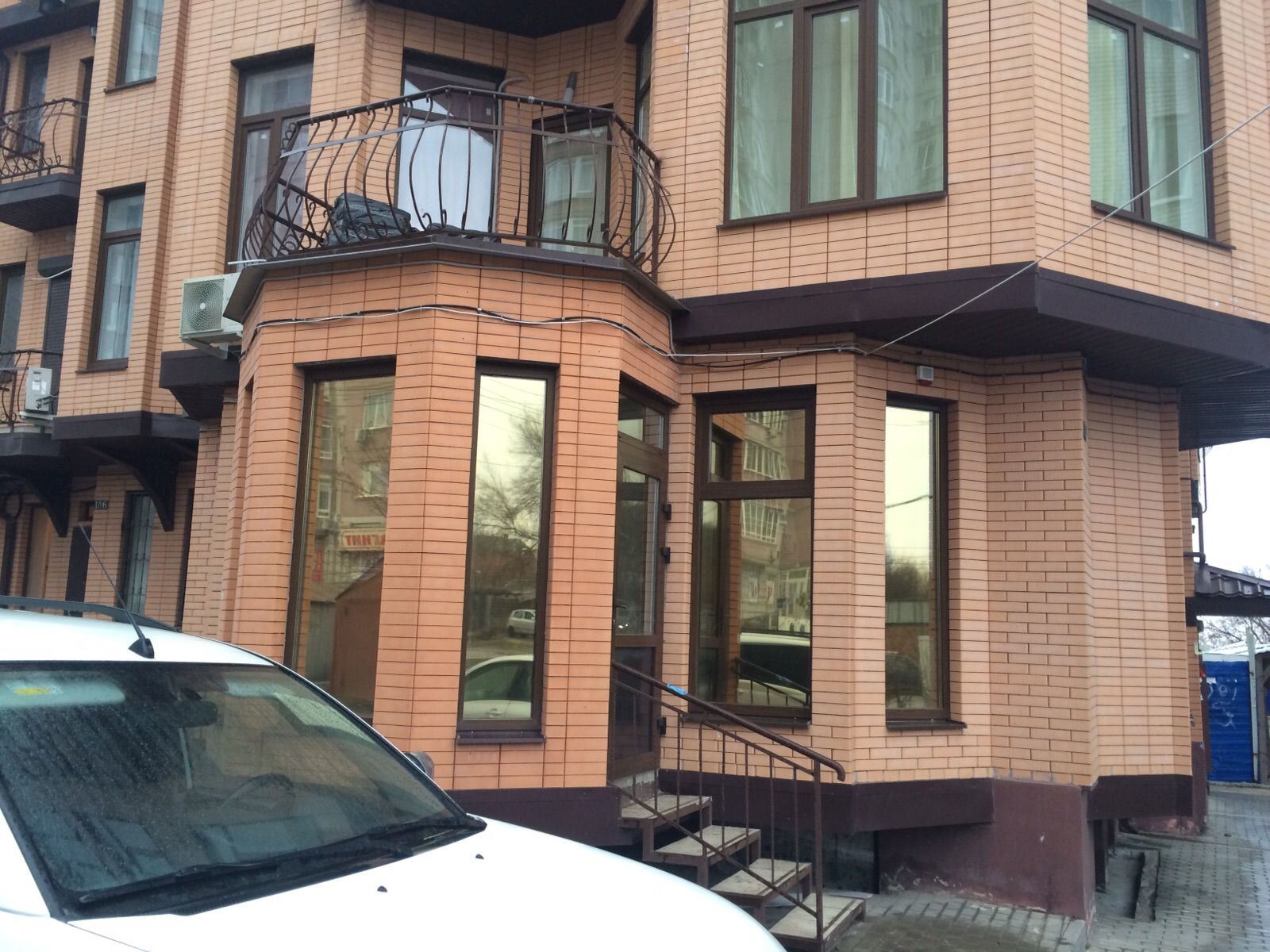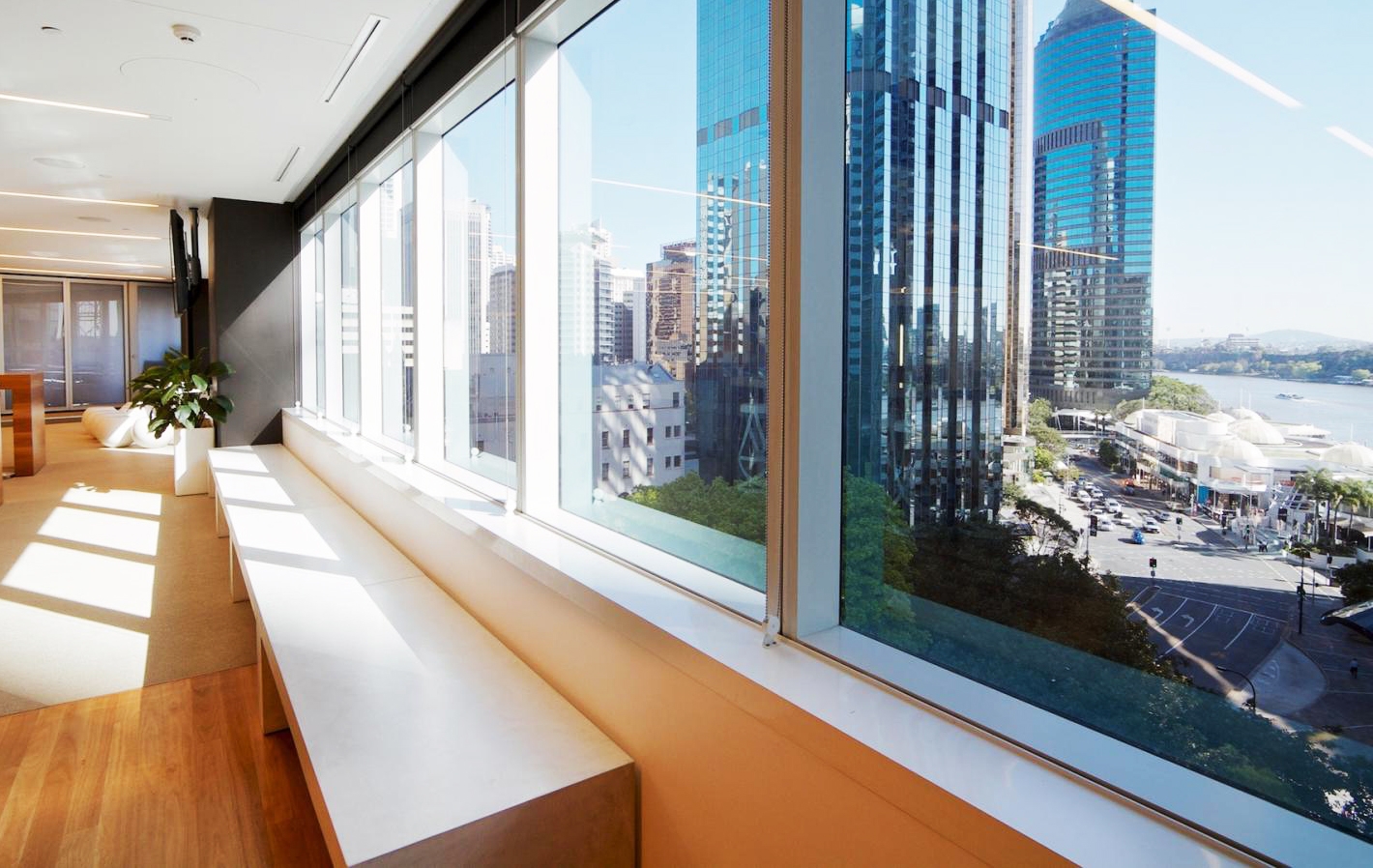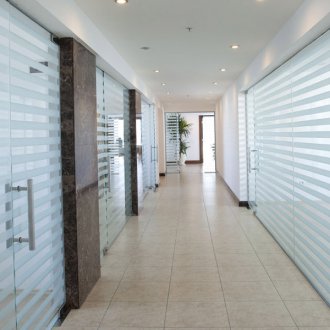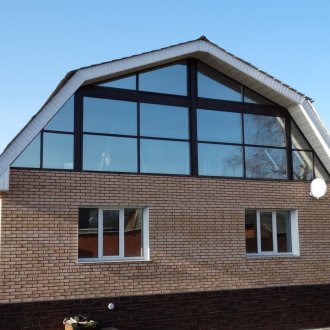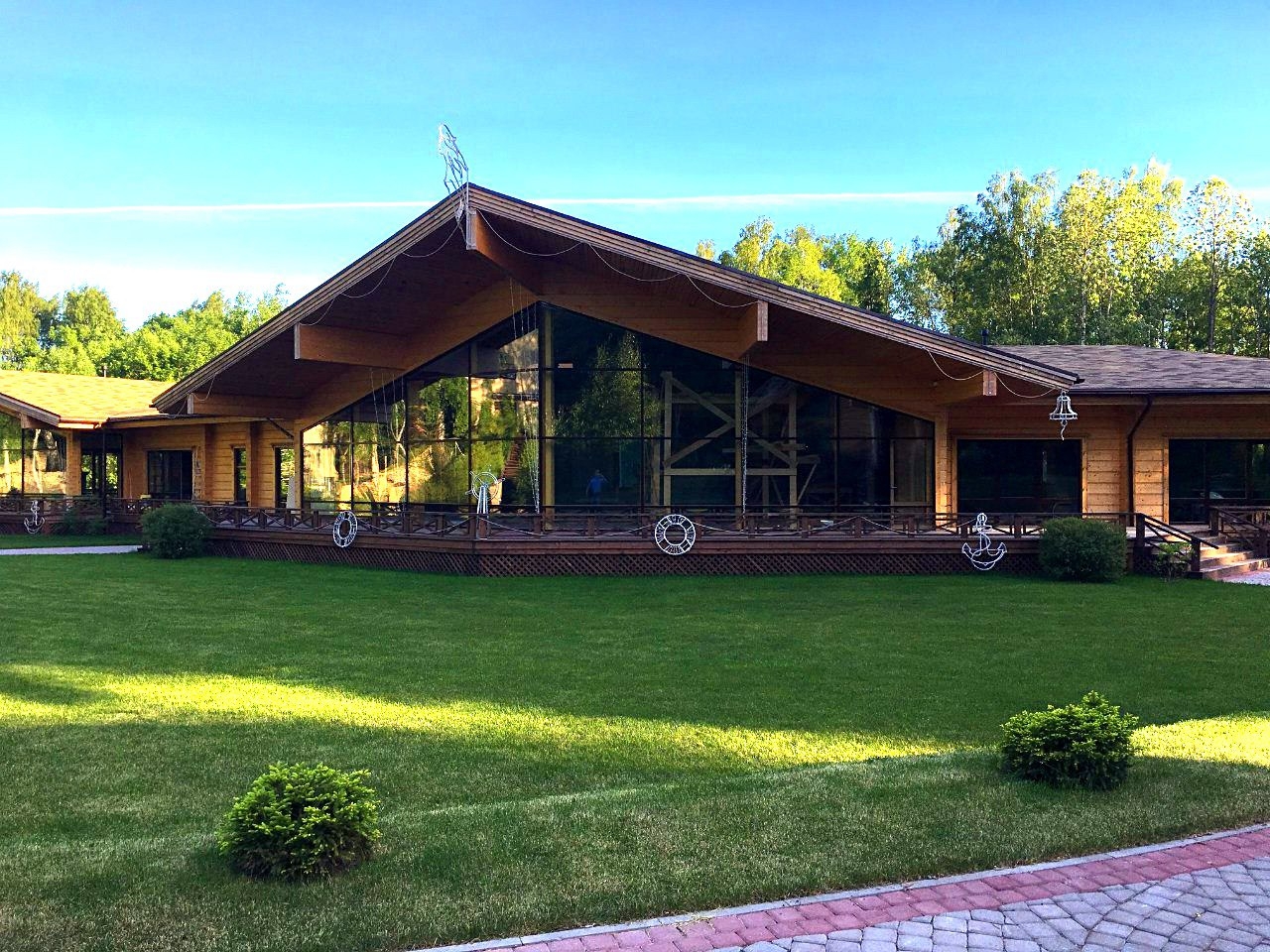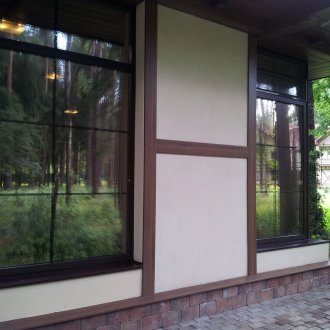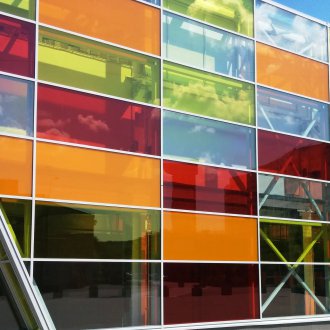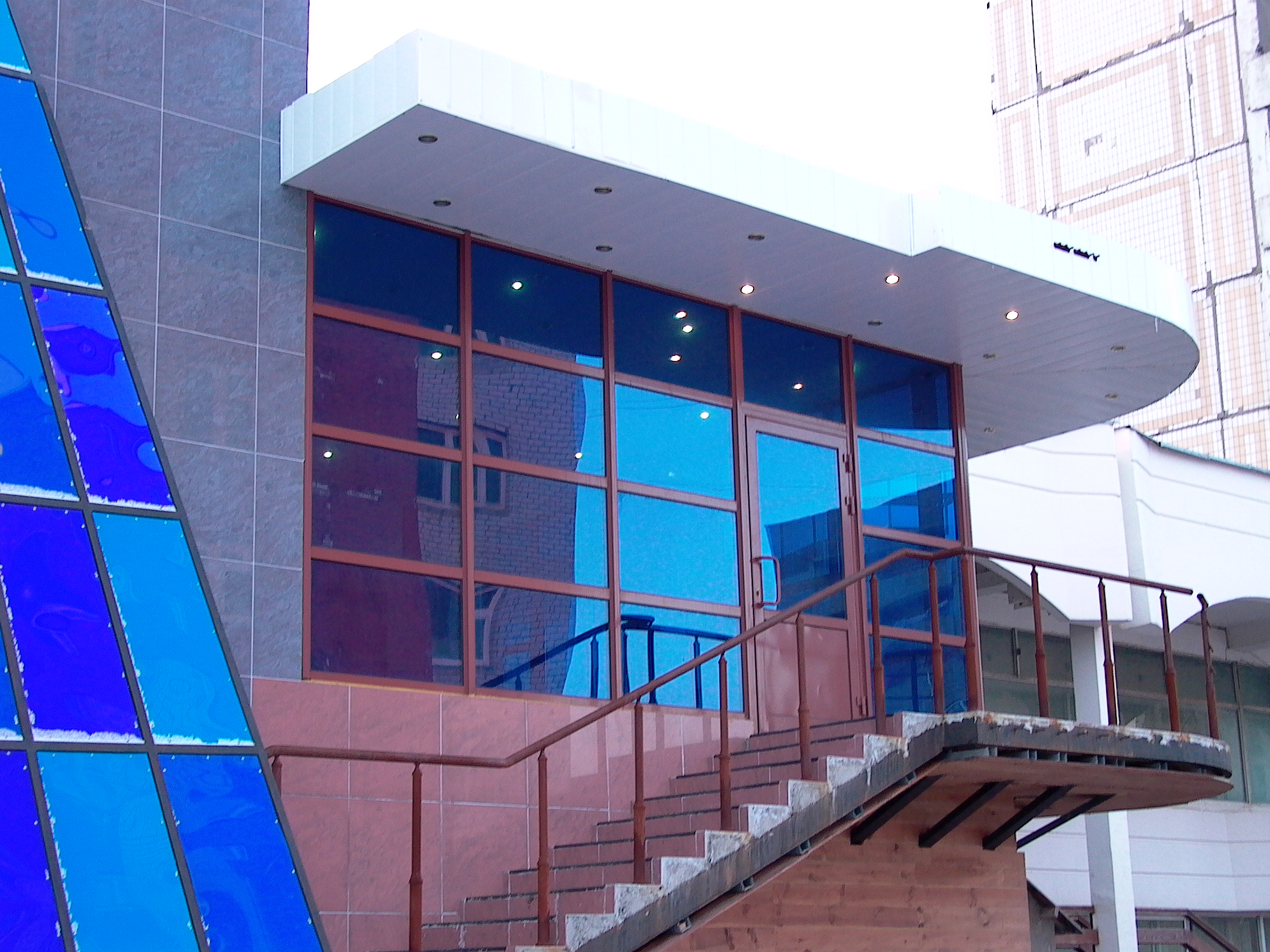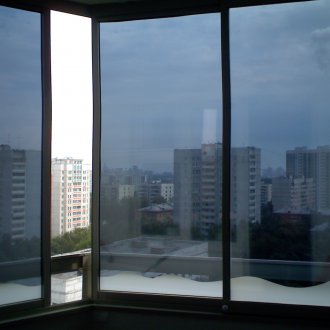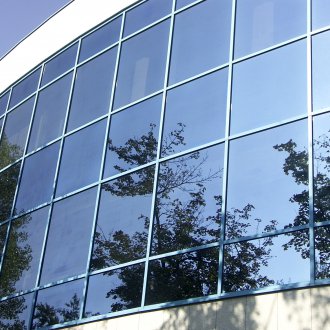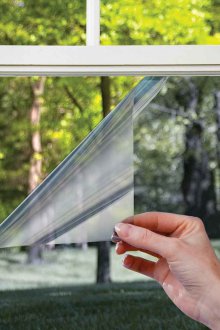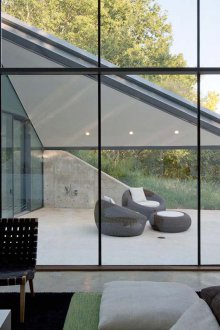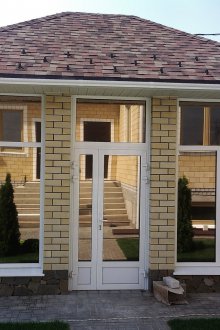Sunscreen at home: features of use (20 photos)
Content
Sun-protection film is a modern material that is used to protect the room from the penetration of sunlight. It is glued to the windows of apartments, country houses, office buildings, banking institutions, shops and shopping centers. Such a film has gained great popularity due to its characteristics and ease of use.
Characteristics of sunscreen
The film is made of several layers of various materials, each of which has its own purpose:
- Colored polyester film. It serves to reflect a specific spectrum of solar radiation.
- Metallized polyester layer. Required to create a mirror surface.
- Protective covering. Prevents damage to functional layers.
- Polyester resin connects all layers together.
The main characteristics of reflective films include:
- transmittance of UV rays;
- glass dimming level;
- thickness.
The thickness of the film is important to consider when installing it from the outside of the glass. It depends on the thickness of the outer layer how effective the protection against external influences will be: the thicker it is, the longer the life of the film. The level of reflection of sunlight can be 95%, and heat 75%. Values depend on the composition of the film layers.
Advantages and disadvantages
Any sun-protection film-curtain for windows has its pros and cons.
Advantages:
- Even on very hot days, the room temperature will be comfortable.
- Electricity costs are reduced because there is no need to constantly keep the air conditioner on.
- Do not let ultraviolet rays into the room.
- Such films protect furniture upholstery, curtains, wallpapers and other interior items from burning out in the sun, thereby extending their service life.
- Films provide comfort when watching TV and while working on a computer, as they eliminate glare on the screen.
- The mirror and dark tinting film from the side of the street is not transparent, which allows you to hide the room from prying eyes.
- The mechanical strength of the glass increases. When it is broken, the fragments do not fly apart, but remain on the film.
- They can be used for a long time provided that they are used correctly.
- The film gives the windows a stylish and modern look, decorates the interior and exterior. Suitable for decorating any interior.
In addition to these advantages, there are also disadvantages. In cloudy weather, the room will be gray and you will have to turn on the light. Some types of films are very thin and can easily be damaged, so they should be handled with care.
Types of reflective films
Sunscreen films differ in appearance and performance. In addition to sun protection, they solve a variety of design tasks.
Mirrored
They reflect a significant part of the heat rays, while some of the heat is absorbed. May have various shades and degree of blackout. The darker the film, the more pronounced the mirror effect will be and more heat will be reflected.They create one-sided visibility, that is, from the room you can see what is happening on the street, but it is impossible to see the room from the outside.
Such a film can be internal and external (architectural). The internal mirror film is glued inside the glass packet and on the glass from the side of the room, while the architectural film is fixed on the glass from the side of the street. They have an additional coating that protects the film from the influence of the external environment.
Athermal
They are energy efficient. In winter, they can reduce the heat loss of window glass by about 40-45%, and in the summer period they prevent overheating of the room. Such material is produced using a special technology, so the glass tinting effect is not created. It inhibits the penetration of UV rays into the room and perfectly transmits visible daylight. This property allows the use of material on either side of the building. The film has a high density, so the fragments do not scatter when the glass is broken, but remain on the material.
Tinting
Create the effect of dimming the room. A tint film for windows allows only 1-3% of the total amount of ultraviolet rays to pass through. They can have different shades, level of protection from the sun, different density and thickness. There are tinted films with a glossy and matte structure. Such material is used not only for building facades, but also for decorating internal surfaces, including those made of plastic.
Decorative
They can be matte or printed on the surface. Used in interior decoration. Due to the unevenly distributed reflective layer, the performance of such a material is significantly reduced. Such a film is capable of transmitting a fairly large amount of sunlight.
Often, reflective film on windows combines protective and reflective functions. Such products are used for facade and panoramic glazing, and are also mounted on the outside of the glass.
Sticking technology
The sun-protection film can be stuck:
- inside the window structure at the production stage;
- on the outside of the glass (in this case, special types of film are used that have an additional protective layer);
- on the inside of the glass.
Before gluing the material, you should pay attention to the following points:
- The temperature should be between 5-25 degrees. At a lower temperature, the glue will dry for a long time, and at high it will dry too quickly and the film will not have time to stick.
Humidity should be 25-75%. In the process, use a spray gun. - Wet cleaning is required. Otherwise, dust on the glass will reduce the quality of work.
- In order to stick material on glass, no special skills are required, so you can do it yourself.
Fastens the sunscreen for windows as follows:
- The glass must be washed very well, while the remaining paint or varnish must be removed. To do this, you will need special detergents, a sponge, a blade or a metal washcloth.
- The surface should be moistened with water.
- Next is the cutting of the material. First, use a tape measure to measure the glass. Next, a film of the required size is cut with a clerical knife.
- A film is applied to wet glass. Sticking should start from the top corner, gradually moving down and smoothing out all the bumps with a plastic spatula.
- There is another way to fix the film on the windows indoors. This method is simpler than the previous one. The material is taken 2-3 cm larger than the glass and fastened to the frame with buttons, tape or a stapler.
If the need arises, the film can be easily removed, while there are no traces on the glass.
Today there is a large selection of films varying in color, purpose and other characteristics.Sun-protection films allow to create comfortable conditions in the room. In the summer they will not be allowed to penetrate in the hot sunlight, and in winter they will prevent the heat from leaving through the glass.
